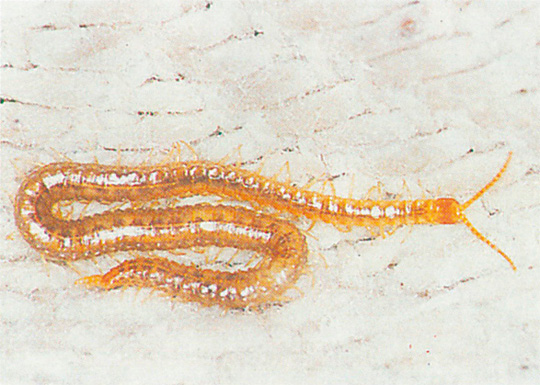(Latin: Geophilus carpophagus)
Commonly known as: Soil centipede

With its long, thin, flexible body this centipede is well adapted for living in tunnels and holes in the soil. Now and again it may enter houses, probably during the night when hunting for prey.
These centipedes are seen particularly in the spring and autumn and their appearance may possibly be due to heavy rainstorms having driven them out of the ground.
They will soon become desiccated in a completely dry house, but in old properties, where they can find suitable damp hiding-places, they may survive for a long time and become a nuisance. They are sometimes seen in houses with thatched roofs, where they may possibly establish themselves in moss cushions on the roof or in the thatch itself.

These centipedes cause no damage in the house; they do not gnaw timber or anything else, but are naturally rather unpleasant when they occur in large numbers.
This centipede sometimes produces a luminescent secretion, of which the origin is not fully understood. In the dark this secretion appears as a luminescent track.




